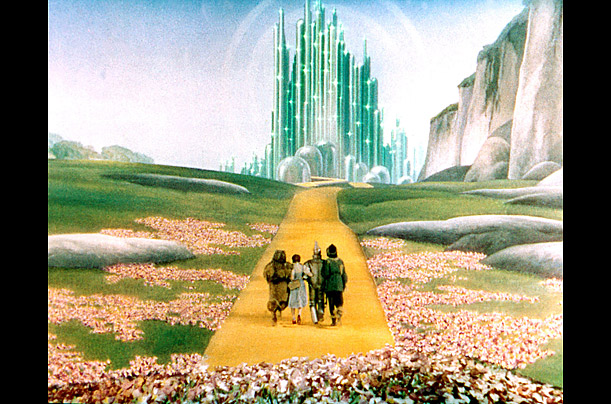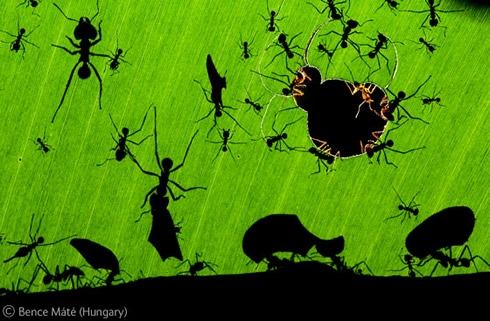A few months ago, I decided I wanted to try and shoot some timelapse and this view would be the ideal subject for my first attempt. Unfortunately, I didn’t have the equipment I needed and I never quite got around to it.
Then last weekend the weather was gorgeous and I found myself without any plans for the day. I decided to seize the moment.
I went down to Leo’s Camera Supply on Granville Street and bought the Pixel Wireless Remote Control. At $120 I probably could have got something cheaper if I’d shopped around but I knew if I kept putting it off I would never get around to doing this.
I had owned a tripod before and never used it because of its cumbersome size, so instead of getting another full-sized one I went to Caya and bought the Joby GorillaPod SLRZoom, a small but solid flexible tripod.
Once I had the right stuff I realised I was only really guessing at how I would shoot this timelapse, so I did a quick Youtube search for some tutorials and found this one from learntimelapse.com.
 Armed with all this new knowledge and equipment, I headed over to my friend’s place and set everything up on his balcony.
Armed with all this new knowledge and equipment, I headed over to my friend’s place and set everything up on his balcony.
Because I was shooting the sunset, I knew the light levels would drop during the shoot. My original plan to set the camera to aperture priority so the aperture would stay constant but the shutter time would increase as the sun dropped. But as the YouTube tutorial points out, this would have introduced flickering, due to inconsistencies in the camera, so I chickened out and set the camera to manual to fix both the aperture and the shutter speed.
I set the camera to take a photo every 2 seconds at 1/100 f8 ISO 100 then set it off and had a beer.
For my first ever attempt at a timelapse, the result wasn’t too bad. The dropping sun meant I had a natural fade built into my sequence. There was still flickering, which after some investigation looked like it came from the JPG compression.
The compression also caused heavy banding in the sky, which I cropped out in the end. A 2-second interval was overkill really. I ended up speeding up the footage 4x, with frame blending on, to smooth out and speed up the action.
Happily, the weather was just as good the following day so I had a second attempt. This time I set the interval to 4 seconds, the ISO to 400 and the camera to aperture priority so I got more detail after the sun had gone down.
The aperture priority did add more flicker to the sequence. I also noticed a motion blur in those shots with the longer shutter. I assuming this was either due to the tripod not being as solid as I’d hoped or the mirror lifting in the camera.
For both sequences, I tried to use the “color stabilizer” and “auto levels” tools in After Effects to reduce the flickering but they didn’t help much, so I downloaded a trial of the GBDeflicker plug-in from Granite Bay Software. The results weren’t perfect but there was a big improvement.
For both sequences I used the “Prolost Flat” settings suggested by Stu Maschwitz. This created flat looking JPEGs that I graded in After Effects. In the case of the second sequence, I animated the grade as the sun dropped.
If you have any tips or think there is any part of my workflow that I got wrong, please let me know in the comments section below.




I’ve been doing a time lapse project for a while. You can actually install a plugin called ‘Magic Lantern’ on your Canon dslr for free. It comes with many additional controls and built-in time lapse is one of them.
I shoot JPGs as well and there’s no flickering issue. I think it’s from your fast shutter speed. The best way to get rid of flickering is to have a longer exposure time (like 3 seconds instead of 1/100 second). Then the exposure would be very even for every photo. If I do time lapse in day time, I always attached a ND filter to reduce the amount of light so that I can get a longer exposure time. In night time, just increase the aperture. I usually do 2-4 seconds for each photo and set the timer to the same value. So that there’s no gap in the motion.
Thanks for the tips. I have heard of Magic Lantern but never got around to installing it. I’ll take a look.
I thought about buying an ND filter but decided not to as I knew the sun was going to go down. I thought it would be too dark by the end of the shot. Maybe I’ll have another go and add an ND filter.
You were using 1/100 shutter with f8 aperture and ISO 100, which means it was quite bright, when you started your sequence, but it’s always preferable to use longer shutter than 1/100. ND filter would definitely help. Also f8 was not helping you, as Canon lenses can’t close aperture precisely. There are ways of locking aperture , I heard that you have to push the lens release button and slightly turn the lens. I use manual lenses instead.
To get a completely flicker-free sequence I recommend using shutter of 1/30 or longer. If you shutter will be half long, than your period, then you’ll get a nice motion blur (the same as with 180 degree shutter in film camera).
As for a dedicated timelapse controller I find this beast to be really interesting: http://www.timelapseplus.com/
The author even promises that it will support bulb ramping with future firmware, which will let you to shoot flicker-free day-to-night transitions.
And here is a nice free program which will let you animate Raw developing settings and reduce flicker:
http://lrtimelapse.com/
Good luck!